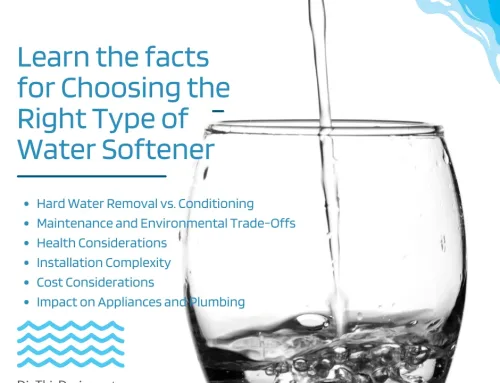Water damage is a common hazard that may cause significant damage to your home. Unfortunately, it can happen much more often than you might think, leaving you in a disturbing mess—literally and figuratively.
On top of that, leaving water damage untreated would turn a simple problem into a costly and cumbersome home restoration project. This is why it’s vital to be familiar with the signs of potential water damage so you can take immediate action to protect your humble home.
6 Signs of Water Damage in Your Home

In this article, you’ll learn the warning signs of impending water damage. If one of these signs exists in your home, you may call any water damage restoration service in your area immediately or visit Floodandfiresolutions.com. With the help of professionals, you’ll be able to bring your home back to its safe, comfy, and cozy condition.
Here are some warning signs of potential water damage to look out for:
1. Water Dripping Sounds
Some signs produce sounds before being seen, and water drippings are one of them. If you hear sounds of dripping water throughout your home, don’t panic. Instead, determine what may have possibly caused them.
The sounds might pertain to a leaky faucet, damaged pipe, creaking floorboard, or gush of water underneath your home. However, some sounds might be present even when the pipelines are working fine, making them quite difficult to discern.
If that’s the case, listen carefully to the sounds and see if there are new sounds you aren’t familiar with. If there are, that’s the time to investigate further to determine if they’re something to worry about.
Furthermore, it’d also be best to consult a plumbing expert if such sounds in areas you can no longer access without prior knowledge. Doing so will help prevent adding fuel to the fire, which can lead to additional costly repairs.
2. Water Stains
Stains caused by water are one of the most common telltale indicators of water damage. Slight discolorations and curled wallpaper that often appear on walls, ceilings, and floors for no apparent reason are probably due to undetected leaks in your walls and roofs.
Examine your walls and ceilings and look for yellow-brown patches or streaks of discoloration on the side of your home. Such cases might indicate an overflowing eavestrough or damaged pipes hidden within the walls.
Aside from damaged pipes and gutters, stains can also be due to mold or seepage within your walls. This might be because of roof or pipe leaks that have drifted through the walls of your home.
In addition, keep in mind that stains may evolve and spread over time, especially if the root cause is left untreated. They often appear in the bathroom, laundry room, or any area around your home with numerous pipes.
3. Mold Growth
Mold is a fungus found in locations with excessive moisture levels. Any part of your home—wood, ceilings, carpets, walls, and other objects—that remain moist for longer periods, can be a breeding ground for mold.
A musty smell is one way to indicate potential mold growth. This smells like cardboard or a newspaper and becomes smellier in areas near the water damage. If you notice any musty odor, check your surroundings and see if there are damp, moist, spongy, and wet surfaces.
Mold often appears as blue, green, or black patches and can be fuzzy. It may thrive behind your bathroom curtains, through your tiles, under your carpets, or within your walls. Also, mold is usually found in basements, kitchens, bathrooms, or other areas with excess moisture.
4. Pools And Puddles
If you’ve noticed any leaks or drippings around your home, you’ll also probably notice puddles of accumulated water. Be sure to clean them up immediately and check later to see if they reappear. If they do, the area probably suffers from leaks and seepage. It could be due to damaged pipes, roofing issues, and more.
At this point, the best thing to do is to call a water damage restoration service as soon as possible. This is because the pool of water may indicate critical water damage in one or more locations throughout your home.
5. Damaged Walls And Ceilings
Damaged walls and ceilings due to water damage are easy to spot once they become too obvious. However, detecting the first signs of damage might not be easy. That said, check your wallpaper to see if they’re bubbling or if the paint starts to peel off your walls.
For drywall, check for cracks that may appear due to the water inside the wall, causing it to swell. This may also cause sagging and supersaturated walls. Also, walls and ceilings may become too spongy to touch.
6. Damaged Floors
When it comes to flooring, always check the flooring of the area you don’t frequently use, such as the corners of the room. If water seeps into and causes damage to your subflooring, then you might have problems underneath your home. This usually indicates a pipeline leakage or a highly-saturated foundation.
As a result, you’ll notice some of your tiles loosen up without apparent reason, and your carpet becomes spongy and feels wet. When it comes to wood and linoleum, you’ll notice that some of the panels start to warp and swell due to moisture absorption.
Damaged flooring is a clear indicator of potentially serious water damage. Therefore, if you notice some across your home, don’t hesitate to call your local water damage professionals as soon as possible.
Conclusion
Checking for water damage is a crucial action that may help prevent underlying issues from becoming a serious threat to your home. Failure to do so may result in problems that may cause significant and costly repairs to your home.
Above are the warning signs you can use to identify potential water damage. Although spotting signs can be tricky as they’re not always evident—some cases might be obvious, while others are subtle and vague—you must be extra vigilant and address them as quickly as possible. This way, you’ll be able to keep yourself from further problems and costly expenses.
Other Posts You Might Enjoy:
What are the Steps for Handling Water Damage Restoration





